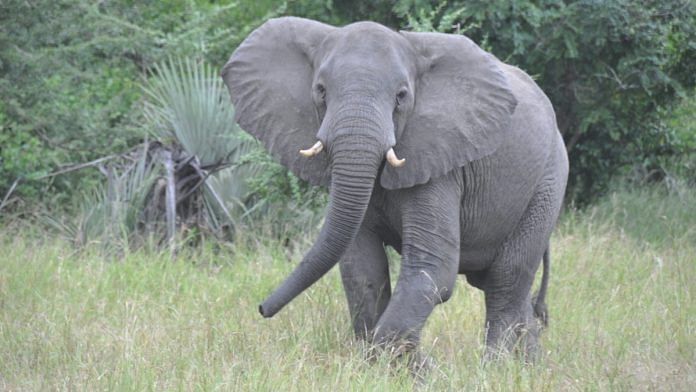Bengaluru: During the Mozambican Civil War (1977-1992), the elephant population in the east African country fell by 90 per cent due to poaching for a thriving ivory trade. As the population recovered, naturally tuskless female elephants became a common sight. They now make up nearly half the female population in Mozambique’s Gorongosa National Park.
Now, researchers from Princeton University have sequenced the genome of tuskless and tusked elephants to deduce which genes are responsible for the rapid spread of tuskless female elephants.
Two key genes associated with teeth formation, one of which is lethal to tuskless males, have been identified.
The natural and rapid spread of elephants without a key anatomical trait, thanks to human pressure, is thought to likely have as-yet-undiscovered consequences for the ecosystem.
The findings were published in the journal Science last week.
Also read: Microfossils suggest our ancestors interacted with some early humans in Thar Desert, study says
A killer gene
An analysis of long-term data since the 1990s indicated that tuskless males had hardly ever been spotted in the national park. This prompted the team to study the genetic drivers behind the rapid evolutionary change in Mozambique elephants.
They sequenced the genome of 11 tuskless females and seven tusked females, and identified two key genes that were involved in tusklessness. Both genes were previously known, and play a part in strong and structurally sound teeth-building in mammals.
The first is MEP1A, whose roles include the formation of enamel.
The second is in the X chromosome, called AMELX. This gene is located close to other crucial genes, which are necessary for the survival of males or the Y chromosome. Mutation in this gene affects these other genes as well, causing the death of the Y chromosome.
As a result, female elephants in Gorongosa can produce both tusked and tuskless female offspring, but only tusked male offspring. Tuskless males possibly end up as genetic defects in the womb and are likely miscarried, the researchers found.
The exact nature of changes in the two genes is yet to be determined.
Darwinian debt
Elephants are a keystone species that are crucial for the survival of other species and ecosystems.
They fall into the category of animals that are described as “ecosystem engineers” as they physically shape the landscape around them, by uprooting and pulling down trees, ripping apart grass, digging the ground, dispersing seeds and transporting nutrients through dung, and attracting smaller animals.
Other ecosystem engineers include creatures like beavers, which cut trees and build dams, the gopher tortoises, which dig long deep tunnels and burrows that over 300 other species use, and corals, which offer a nutrient-rich environment for a quarter of marine wildlife.
Elephants rapidly evolving to lose a key anatomical trait is expected to have consequences like reduced disturbances of sedimentary deposits (bioturbation), changes in the composition of plant species around, reduction in diversity hotspots caused by digging up of landscape, and less slashing of trees, leading to an increased tree cover, the researchers said, pointing out that this could in turn affect various other parts of the ecosystem in unpredictable ways.
The paper also said that the re-emergence of tusks could take a longer time than their disappearance.
“Understanding the dynamics of rapid evolution in the Anthropocene is therefore essential, not only for revealing the biological impacts of contemporary human activities but also for designing strategies to mitigate them,” the scientists said.
(Edited by Amit Upadhyaya)
Also read: Scientists have found a ‘second brain’. And it’s in your gut



